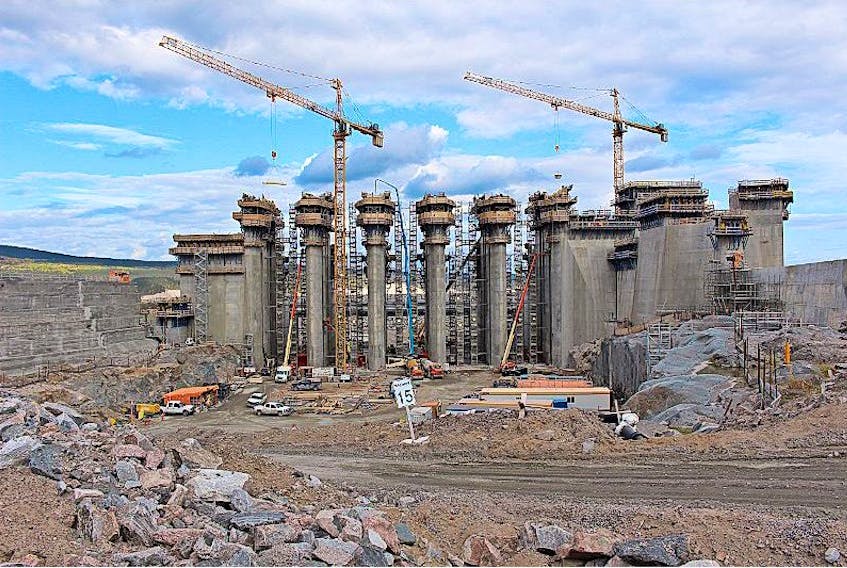“Hindsight is the historian’s necessary vice.” — Hilary Mantel
So, there it is in black and white, the point at which this province might reasonably have decided not to move ahead with Muskrat Falls — billions of dollars yet to be wasted, habitat as yet undestroyed, electricity rates still stable, no inquiry needed.

It’s this section, from the August 2011 Report of the Joint Review Panel set up by the provincial and federal governments to assess the Lower Churchill hydroelectric generation project:
“The panel concluded that if the recommended economic and alternatives studies show that there are alternative ways of meeting the electricity demands of the island over the medium term in a manner that is economically viable and environmentally and socially responsible, the Muskrat Falls portion of the project should likely not be permitted to proceed for purposes of meeting island demand.”
Demand was touted as a driving factor, but the panel wasn’t convinced by Nalcor’s argument that Muskrat Falls was “the best and least-cost way” to meet it. It recommended further exploration of alternative options.
The panel also couldn’t see any markets for excess power, despite Nalcor’s vague assertions that they existed.
“Nalcor had not demonstrated the justification of the project as a whole in energy and economic terms…” the report concluded.
Why revisit the panel’s report now, six years later?
Because as the work of the inquiry into Muskrat Falls begins, it makes a good starting point. It’s worth remembering the extensive ground it covered, the sound recommendations it made and the government of the day’s flat rejection of them.
Reaction to the report was telling, with then Nalcor CEO Ed Martin defending the “robust data” the project was premised on.
“Muskrat Falls, with a link to the island of Newfoundland to support the province’s future energy requirement, remains the best option,” he told The Telegram, adding that Nalcor was continuing to work towards getting the project sanctioned.
Why was Nalcor pressing to have the project move ahead? Indeed, why would the government sanction a project after being advised by a provincial-federal panel that there was no viable business plan, that there were considerable risks, and that there had not been an adequate exploration of other options?
Consumer advocate Dennis Browne pointed out in an interview this week that, at the time, the project involved developing both Gull Island and Muskrat Falls (minus the cost of transmission to the island) for the low, low price of $6.4 billion.
Why was Nalcor pressing to have the project move ahead? Indeed, why would the government sanction a project after being advised by a provincial-federal panel that there was no viable business plan, that there were considerable risks, and that there had not been an adequate exploration of other options?
That that seems a bargain now says it all, as the price of Muskrat Falls alone creeps towards $13 billion, with the words of former premier Danny Williams echoing discordantly in our ears: “This was a good project then, it’s a good project now, and it’s a good project for the future…”
In British Columbia, the fate of the partially complete Site C dam project — with the potential to hit $10 billion and boondoggle status — will be decided by year’s end. Website DeSmog Canada reports that economist Marc Lee has called for an inquiry into how BC Hydro and the government of the day “essentially conspired to manufacture the case for Site C.”
In this province, the consumer advocate says the financial fallout from Muskrat Falls will be crippling and we need to find the best way we can to mitigate costs to taxpayers.
He’s also convinced the case for Muskrat Falls was a ruse.
“This was a political project, pure and simple, launched without due process,” Browne said.
“This is probably the most costly project in Canadian history, and will produce some of the most expensive power on the planet. … It was a project that had been dismissed by previous governments since 1965, and sold to us through propaganda as something that would serve us well now and into the future.”
The 2011 report issued this warning: “There are considerable uncertainties in the predictions about biophysical, social, cultural and economic effects of the project. There are also considerable uncertainties about the effectiveness of mitigation measures.”
The inquiry should determine whether these uncertainties have truly been addressed, or whether they remain.
Pam Frampton is The Telegram’s associate managing editor. Email [email protected]. Twitter: pam_frampton









